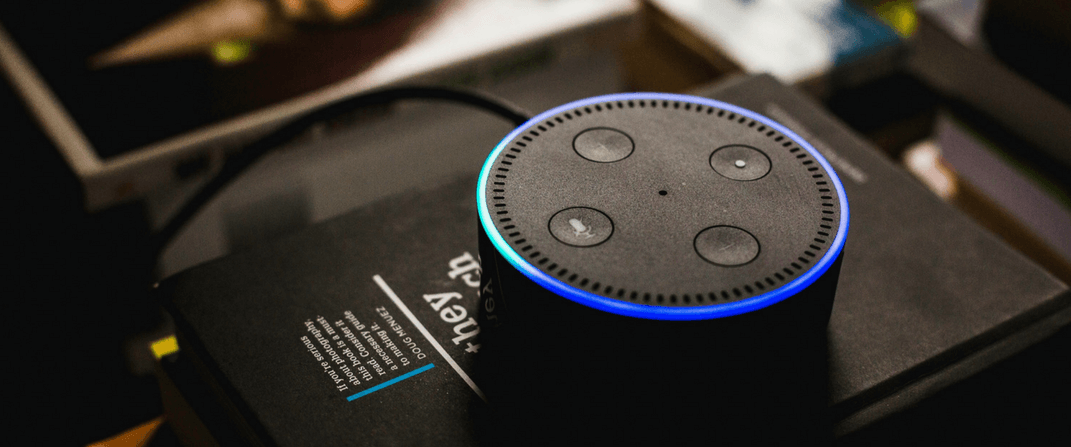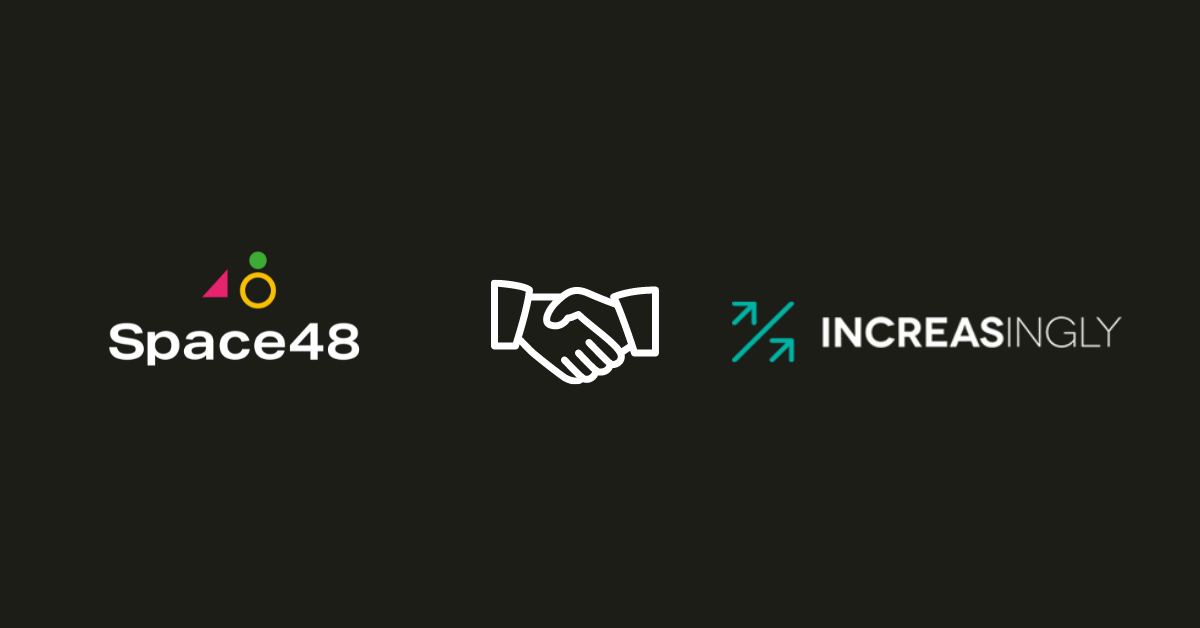
Top Tools and Technology to Enhance Your Omnichannel Retail Strategy
Taking an omnichannel approach in retail is becoming increasingly important, as modern consumers expect a seamless user journey, wherever and whenever they browse and shop for products. Brands must leverage new technologies and utilise the tools available to them, to help them achieve an effective omnichannel strategy.
Space 48’s Head of Insight, Oliver Lees, discusses some of the tools and technology to consider when looking to enhance your omnichannel retail strategy…
New technology and trends influencing today’s retail strategies
Today’s shoppers seek easy navigation and browsing, frictionless routes to purchase and flexible payment and shipping methods. So, the onus is on retail brands to meet consumer expectations and delight them with their customer experience throughout the user journey.
Browsing and buying behaviours are changing all the time, especially due to advancing technology, the rise in mobile shopping and the omnichannel commerce experiences that innovative brands are delivering to consumers. This heightens the expectations of customers all the time, putting the pressure on merchants to meet their needs.

The more seamless and interconnected your commerce channels and communications are, the better the customer experience. And the better the experience, the more likely customers are going to convert and keep coming back to your stores, website and social channels in the future.
Here are some of the key technologies that are influencing retail and marketing, which you should be aware of and look to incorporate in your strategies.
Artificial intelligence
AI is not just the future of business innovation, it’s already having a big influence on businesses across the world right now. Forward-thinking retailers are already leveraging the power of artificial intelligence for getting the most out of the wealth of data available to them and for creating more targeted and relevant experiences for consumers.
Many businesses are still to explore the technology, but this chart from Smart Insights below shows some of the areas in which companies are integrating AI technology, such as personalisation, content creation and customer service:

Machine learning is helping brands to deliver more effective email marketing campaigns. For example, email tools like Phrasee use machine learning to predict the type of subject lines and content that will hook recipients and encourage them to engage and convert through email campaigns.
For effective omnichannel commerce, you must maintain continuity in your customer experience and level of service, both offline and online. Chatbots are becoming a must-have technology for retailers and ecommerce stores, as they can help users to get the answers to their questions and the solutions to their problems, without having to leave the website or wait for a response via email or phone.
Chatbots can also be used to help consumers find products and to ease the decision-making process on ecommerce stores, to boost conversions.
Voice search, smart assistants and voice commerce
Retailers and marketers should already been adapting strategies to incorporate voice search, as it’s changing the way we search for information, products and services.
It’s been predicted that, by 2020, 50% of all searches will be voice searches. (Source: Campaign Live)
SEO must be adapted accordingly, to account for more conversational searches. Using long tail keywords and questions in your content is therefore more important than ever. Consider the kind of questions your key personas may ask voice assistants. This is crucial for embracing voice search.
This video demonstrates how voice commerce is already possible through the use of Amazon Echo and its Alexa voice-recognition technology:
VR and augmented reality
Like with AI, it’s no longer the case of thinking that VR and augmented reality are gimmicky technologies or solutions for the future. These technologies are already being leveraged to good effect by brands, to deliver not only impressive visual experiences but also helpful and customer-centric ones.
ARKit is one of the leading innovators in augmented reality. The app has enabled brands such as IKEA to offer customers unique browsing experiences, to better visualise products in their home and help decision-making, by enabling users to virtually place IKEA furniture into their homes.

Another example of a brand utilising VR and augmented reality well, is Converse. The Converse Sampler app lets users virtually try on their shoes. Uses can then share a photo of themselves (virtually) wearing the sneakers on social media, which is great for social proof and building brand awareness! Check out the video below:
Top tools for enhancing your omnichannel strategy
Here we outline some of the top tools you can use to create better customer experiences across different channels and devices, from personalisation tools to analytics platforms that help retailers take a holistic view of the user journey.
Personalisation and dynamic content tools
Nosto is our pick of the personalisation tools on the market. It’s actually the fastest growing global personalisation solution. Nosto enables ecommerce businesses to deliver personalised shopping experiences onsite, via email and through targeted paid social ads.
It’s an effective omnichannel personalisation solution, which analyses user browsing and buying behaviours to helps retailers serve them with relevant product recommendations and timely offers, to encourage conversions and boost average order value.

Episerver and Fresh Relevance are also good personalisation tools, which insert dynamic persuasion tactics and live content into email marketing campaigns.
Marketing automation platforms
Automation is so important in ecommerce, as its enables retailers to tailor the customer journey and helps convince consumers to convert. When shoppers reach your website, browse your products and take actions, automation utilises data to trigger campaigns and content that’s relevant to them.
MailChimp is one of the best-known ESPs (email service providers) and used to be viewed as a fairly simple solution, but MailChimp now offers a great range of marketing automation functionality for all your needs.

MailChimp’s automation workflow recipes are easy to use and allow you to set up effective behavioural triggers for your email marketing campaigns. We’d also recommend dotmailer, which is another great user-friendly email marketing and automation platform for businesses of all sizes.
You should also use tracking pixels, such as the Facebook Pixel, which offer extensive tracking capabilities to enable marketers to use granular retargeting ads to nurture prospects and customers and encourage more conversions.
Single customer view platform solutions
Having a single customer view helps unify your online and offline data, to give retailers the ability to truly nurture customers effectively through browsing behaviours, preferences and purchase history, gathered from different sources.
Magento’s Order Management product, which is available with Magento Commerce, is an example of a unified commerce platform, enabling omnichannel strategies to thrive through it’s single customer view.
User journey monitoring and UX measurement tools
To fully understand the big picture of your website’s UX effectiveness and user journey, you need an ecommerce monitoring solution like FullStory or Hotjar.
FullStory is an extensive user behaviour monitoring tool, which provides retailers with rich insights about where the painpoints and frictions are for your website visitors and where you’re having most success.
Hotjar is an powerful cloud-based user tracking tool, which offers a wide range of insights about browsing behaviours on your ecommerce website.
These tools both help merchants to optimise their UX and create smoother routes to purchase, by pinpointing key engagements and actions, including innovative mouse movement heat maps and behavioural testing.

Tools for integrating social channels with your ecommerce website
Are you currently leveraging social channels and user generated content to increase reach and engagement, and boost social proof? We highly recommend Olapic, as UGC tool helps retailers create a user content funnel from social channels to brand websites.
Leading cosmetics brand Charlotte Tilbury uses Olapic for its “Tag Your Tilbury” feature, which encourages users to tag social posts featuring its beauty products. These posts then feed through to the website. It’s a really effective tactic for omnichannel commerce, as visitors to this page can buy the products featured in the pictures!

Summary: harmonise your offline and online experience
We hope this blog and the tools and technologies featured have opened your eyes to the possibilities available to retailers for creating great customer experiences and omnichannel strategies. However, omnichannel commerce is not just about integrating different retail channels, as success comes from harmonising the offline and online user experience for consumers.
This requires rigorous research and planning to ensure a continuity of customer service and experience across all key channels and departments within your business. Learn more in our blog: How to Harmonise the Online and Offline Shopping Experience.
Space 48 is a leading UK ecommerce consultancy, based in Manchester. We specialise in ecommerce website development and omnichannel retail strategies. Do you have any questions about the themes discussed in this blog? Get in touch with us. We’ll help to pinpoint your key growth opportunities and areas in which to improve your ecommerce performance.





